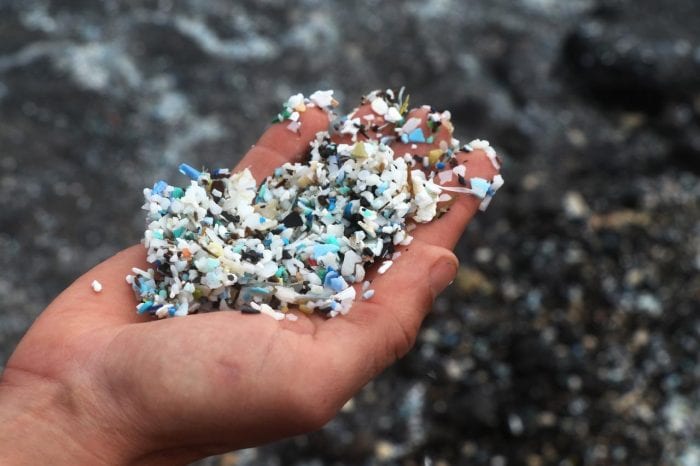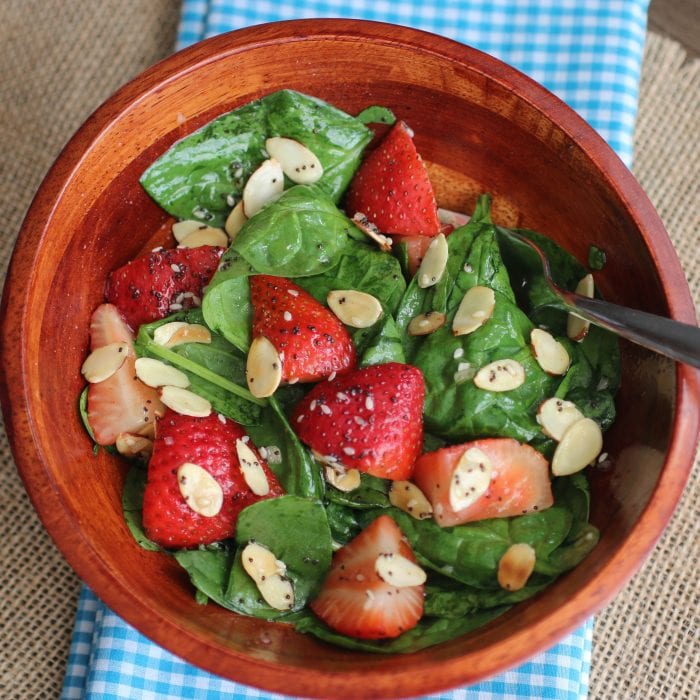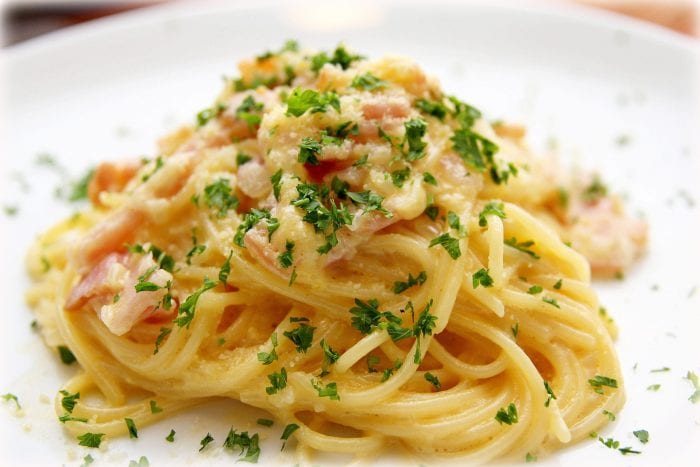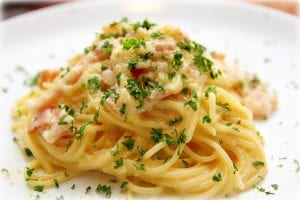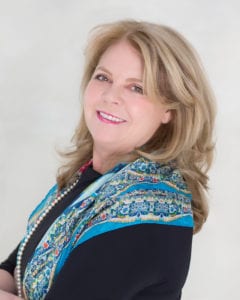By Barbara Beltrami
Moms love salads. They order them in restaurants and for take out and carry them to work in plastic containers. They probably try to get you to eat them. So why not make Mom a special salad or two or three for her special day? It’s a project that accommodates lots of chefs and sous chefs and is fun to prepare and assemble. Here are some out of the ordinary salads that are sure to bring a smile to Mom’s face and lots of hugs to the kitchen crew.
Tomato, Watermelon, Cucumber and Feta Salad
YIELD: Makes 4 to 6 servings
INGREDIENTS:
1/4 cup orange juice
Freshly squeezed juice of 2 lemons
1 shallot, minced
1 tablespoon simple syrup
1/2 cup extra virgin olive oil
Salt and freshly ground pepper to taste
2 ripe tomatoes, cut into 1” cubes
1/8 seedless watermelon, cut into 1” cubes
1 medium cucumber, peeled, seeded and cut into 1” cubes
3/4 pound cubed feta cheese
1/2 cup chopped fresh dill
DIRECTIONS:
In a small bowl whisk together orange juice, lemon juice, shallot, syrup, oil, salt and pepper till thoroughly emulsified. In a large salad bowl combine tomatoes, watermelon, cucumber, feta and dill; when ready to serve toss with dressing and serve with toasted pita bread.
Strawberry, Spinach, Orange and Almond Salad
YIELD: Makes 4 servings
INGREDIENTS:
1/4 cup extra virgin olive oil
1 tablespoon balsamic vinegar
1 tablespoon red wine vinegar
2 tablespoons minced red onion
Coarse salt and freshly ground black pepper to taste
7 cups baby spinach, washed
1 1/2 cups sliced fresh strawberries
1 large orange, peeled, cut into bite-size cubes
1/2 cup sliced toasted almonds
DIRECTIONS:
In a small bowl whisk together the oil, vinegars, onion, salt and pepper. In a large salad bowl toss together the spinach, strawberries and orange. When ready to serve toss with dressing and top with almonds. Serve with sliced grilled boneless chicken breast, lamb chops or steak and baked potato.
Southwestern Chopped Salad
YIELD: Makes 4 servings
INGREDIENTS:
1/4 cup freshly squeezed lime juice
2 teaspoons grated lime zest
1/4 cup extra virgin olive oil
2 tablespoons honey
1 garlic clove, smashed
1 teaspoon chopped fresh jalapeno pepper
1 teaspoon ground coriander
Salt and freshly ground pepper to taste
1 head Romaine lettuce, washed, chopped
One 14-ounce can black beans, rinsed, drained
1 medium-large tomato, chopped
1/2 cup peeled chopped jicama
1 cup fresh, frozen or drained canned corn kernels
1 red onion, finely chopped
1 green bell pepper, chopped
1/3 cup fresh cilantro leaves, chopped
1 avocado
DIRECTIONS:
In a small bowl whisk together the lime juice and zest, oil, honey, garlic, jalapeño, coriander, salt and pepper; let sit and before using, remove and discard garlic. In large salad bowl toss the lettuce, beans, tomato, jicama, corn, onion, bell pepper and cilantro. Immediately before serving, peel avocado and dice, add to salad and immediately toss with dressing. Serve with tacos, nachos, hamburgers, pizza, steak or anything grilled.
Asparagus, Pea, Radish and Bibb Lettuce Salad
YIELD: Makes 4 servings
INGREDIENTS:
1 teaspoon grated lemon zest
2 to 3 tablespoons freshly squeezed lemon juice
1/4 cup extra virgin olive oil
1 to 2 teaspoons honey
Coarse salt and freshly ground black pepper
1 pound fresh asparagus, trimmed
1 head Bibb lettuce, washed and torn into bite-size pieces
1/2 pound snap peas, cut into 1” slices
1 bunch radishes, washed, trimmed, sliced
2 tablespoons snipped fresh chives
DIRECTIONS:
In a small bowl, whisk together lemon zest and juice, oil, honey, salt and pepper. Steam asparagus until barely al dente, about 3 to 4 minutes; immerse in cold water to stop cooking. When cooled, place in large salad bowl and toss with with lettuce, peas and radishes. When ready to serve toss with dressing, sprinkle with chives and serve with meat, fish or poultry.


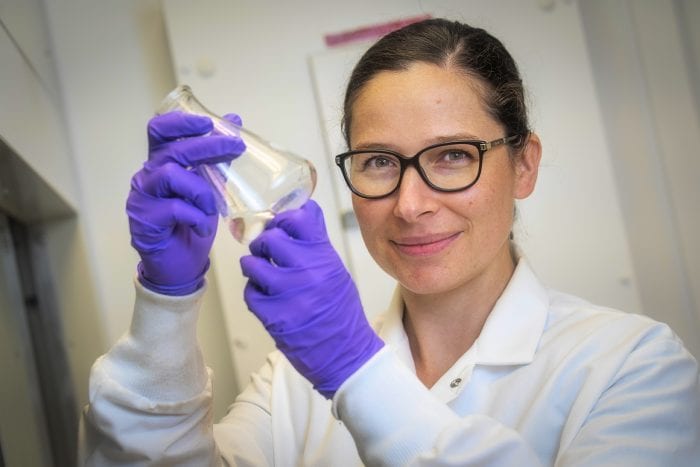
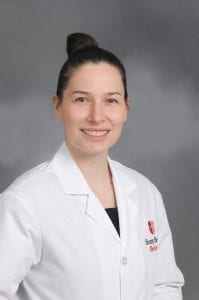

 This week’s shelter pet is Gavin, a seven-year-old male shepherd mix up for adoption at the Smithtown Animal Shelter. Gavin was picked up as a stray and never claimed. He is house-trained and very well-behaved, with excellent manners. He knows his commands and walks well while on a leash. Some of his favorite things include snacks, belly rubs, and going on walks!
This week’s shelter pet is Gavin, a seven-year-old male shepherd mix up for adoption at the Smithtown Animal Shelter. Gavin was picked up as a stray and never claimed. He is house-trained and very well-behaved, with excellent manners. He knows his commands and walks well while on a leash. Some of his favorite things include snacks, belly rubs, and going on walks!